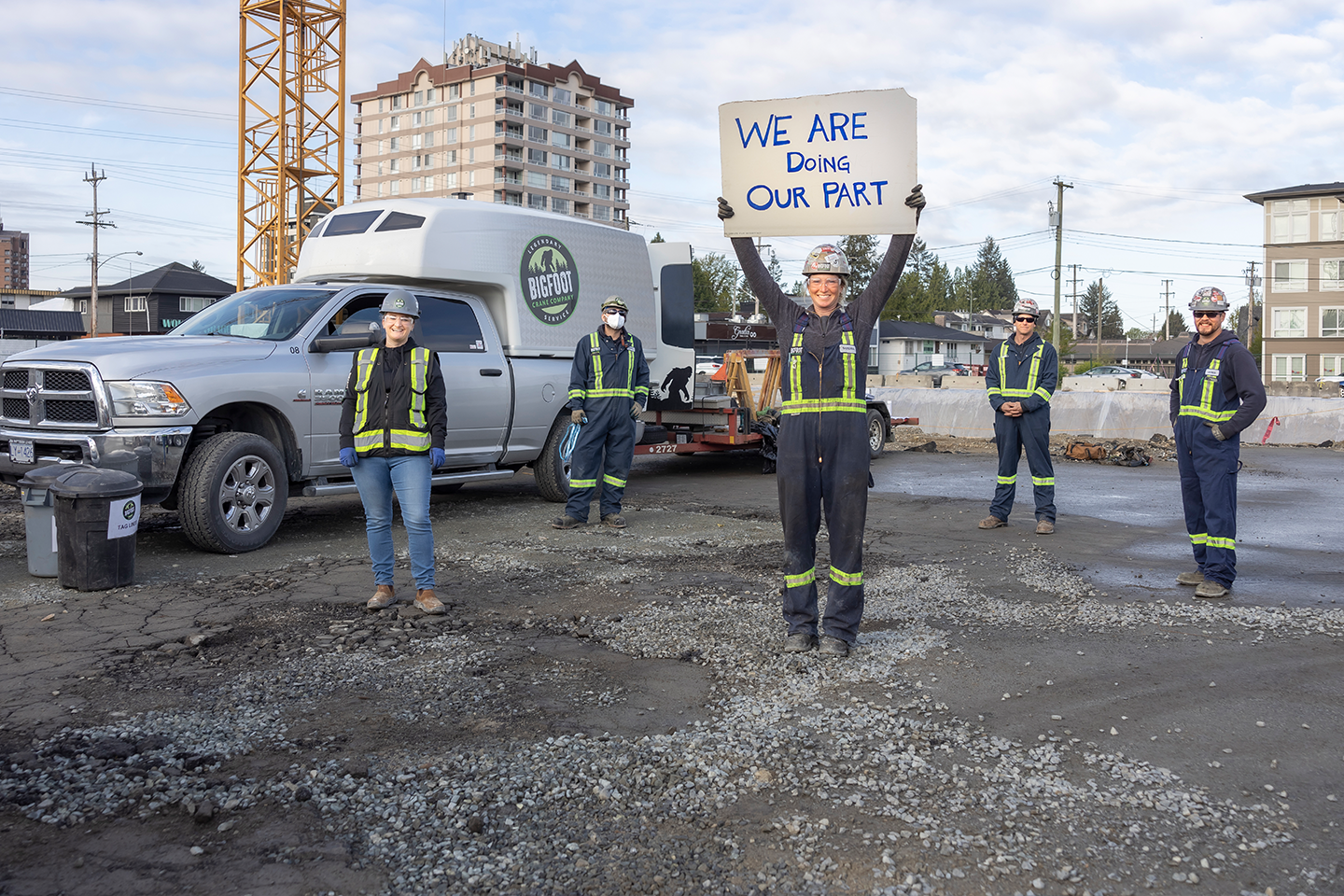Big Foot Crane Company: Putting the COVID-19 safety plan in place
When physical distancing isn’t possible
Like many employers in construction, Ryan Burton oversees more than one workplace. The managing director of Abbotsford-based Bigfoot Crane Company has 12 staff at the office and 18 who visit various jobsites to erect and dismantle tower cranes. So Bigfoot’s COVID-19 response has had to take into account very different scenarios.
Reducing risk for office staff was straightforward. Right from the beginning, "anybody who absolutely didn’t have to be here worked from home," says Burton. Anyone needing to visit — from customers to delivery trucks — has to call ahead and maintain physical distance. The Health Canada COVID-19 app, which includes a questionnaire for health screening, has been downloaded onto all company phones. Sanitizer and disinfectant are widely available.
Reducing risk for crane crews was trickier. "Our employees have to work in close quarters," says Burton. "We couldn’t maintain physical distance while erecting or dismantling tower cranes."
To solve the problem, he turned to the British Columbia Association for Crane Safety, which he chairs. The association worked with its members to develop COVID-19 guidelines.
One of the requirements calls for a construction site to be shut down before crane workers arrive. "That way we had no risk of any of the other trades contaminating our work area," Burton says.
His crews wear N95 masks, gloves, and safety glasses. They use fresh coveralls each day, bagging the used ones at the end of each shift for washing. Fresh washrooms are brought in specifically for the crane crew. And they sanitize their tools daily.
Bigfoot also saw a need for mental health assistance. Working during the pandemic can cause anxiety, he notes. "There’s a lot of reassuring, calming nerves, being supportive," Burton says. "We have also arranged some counselling."
"We pulled resources from WorkSafeBC and they’ve been supporting us on site, attending pre-job meetings. They’ve been explaining the risks."
Read about what other employers have been doing to implement the COVID-19 safety plan in WorkSafe Magazine.

